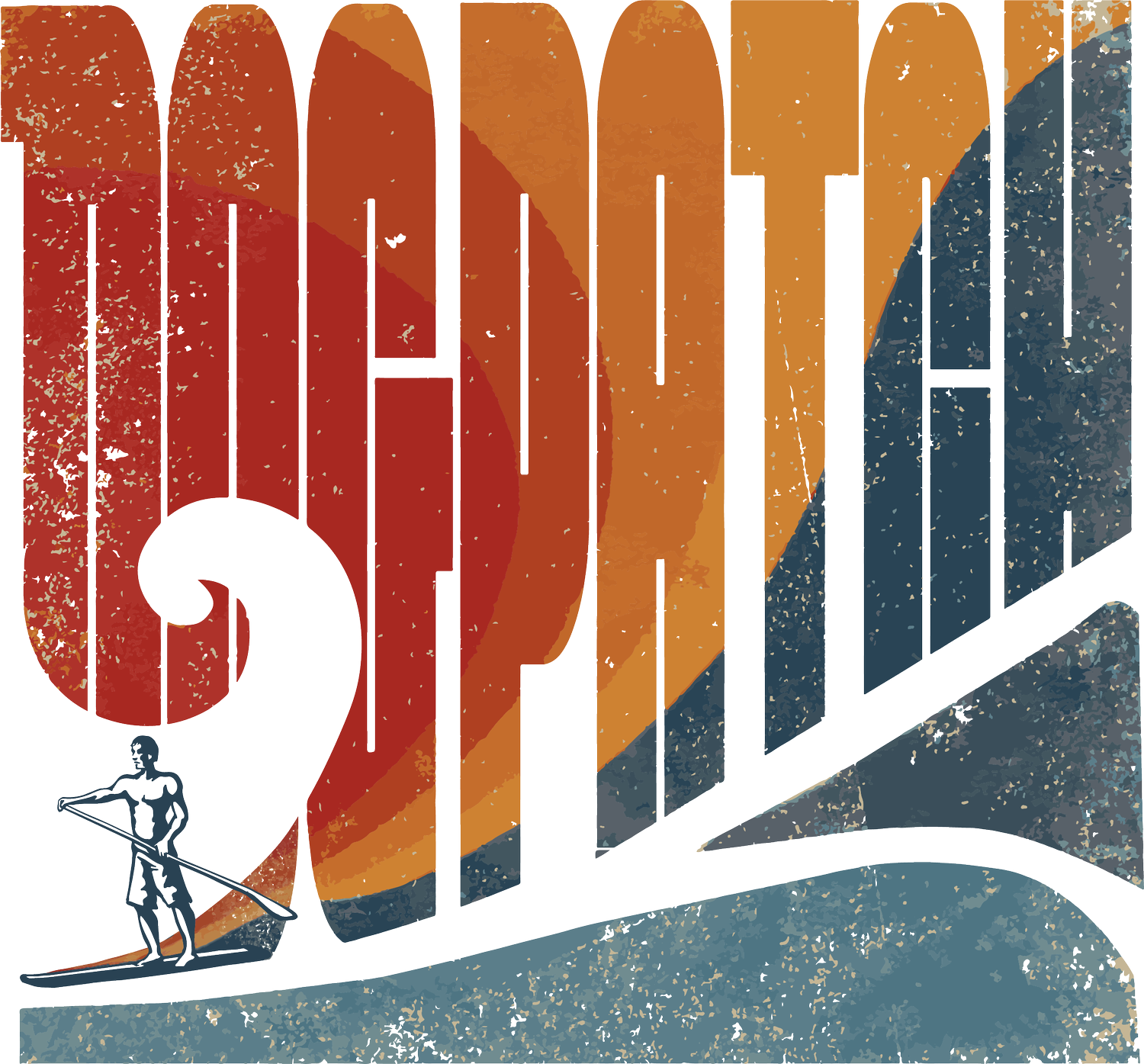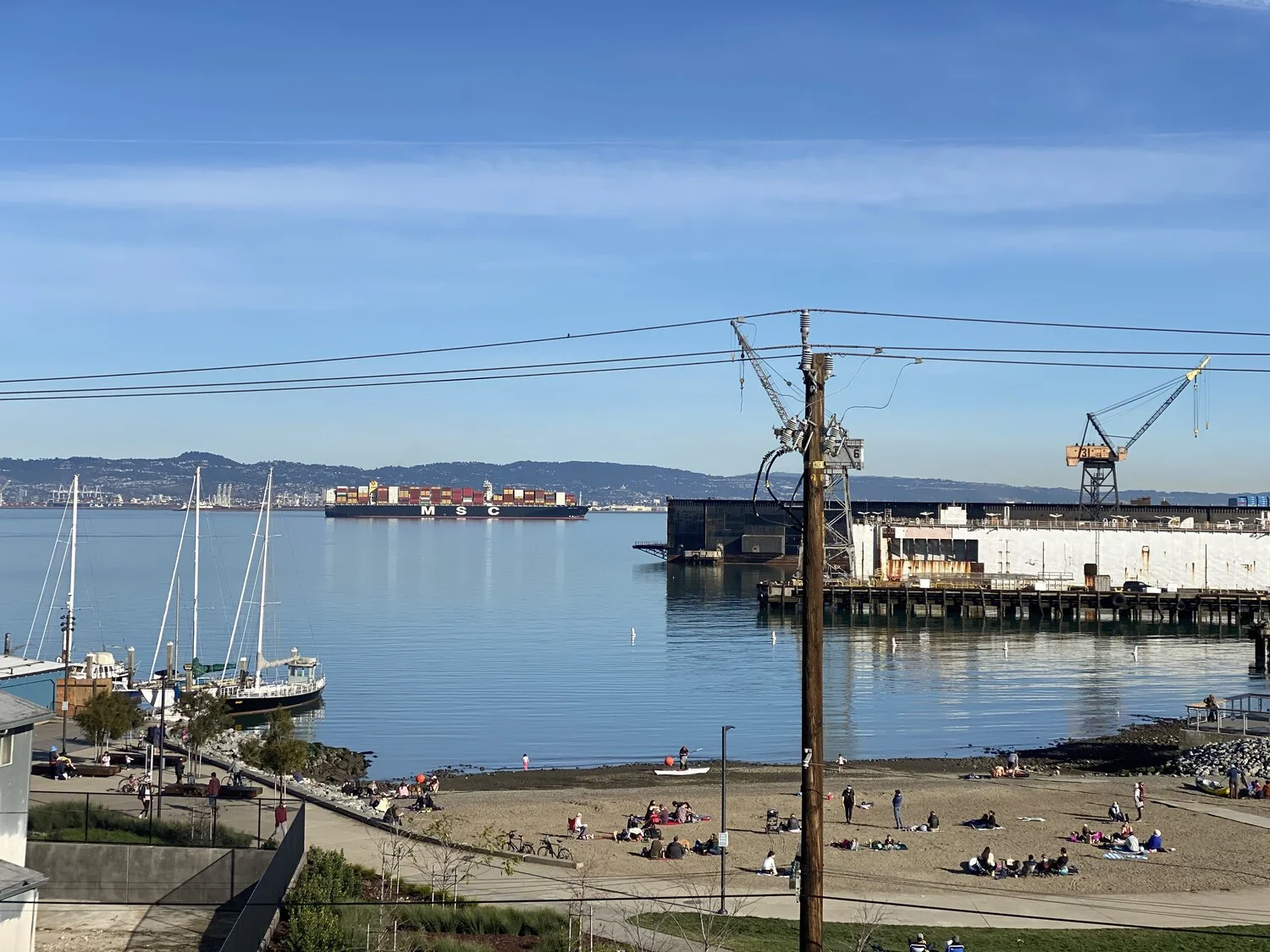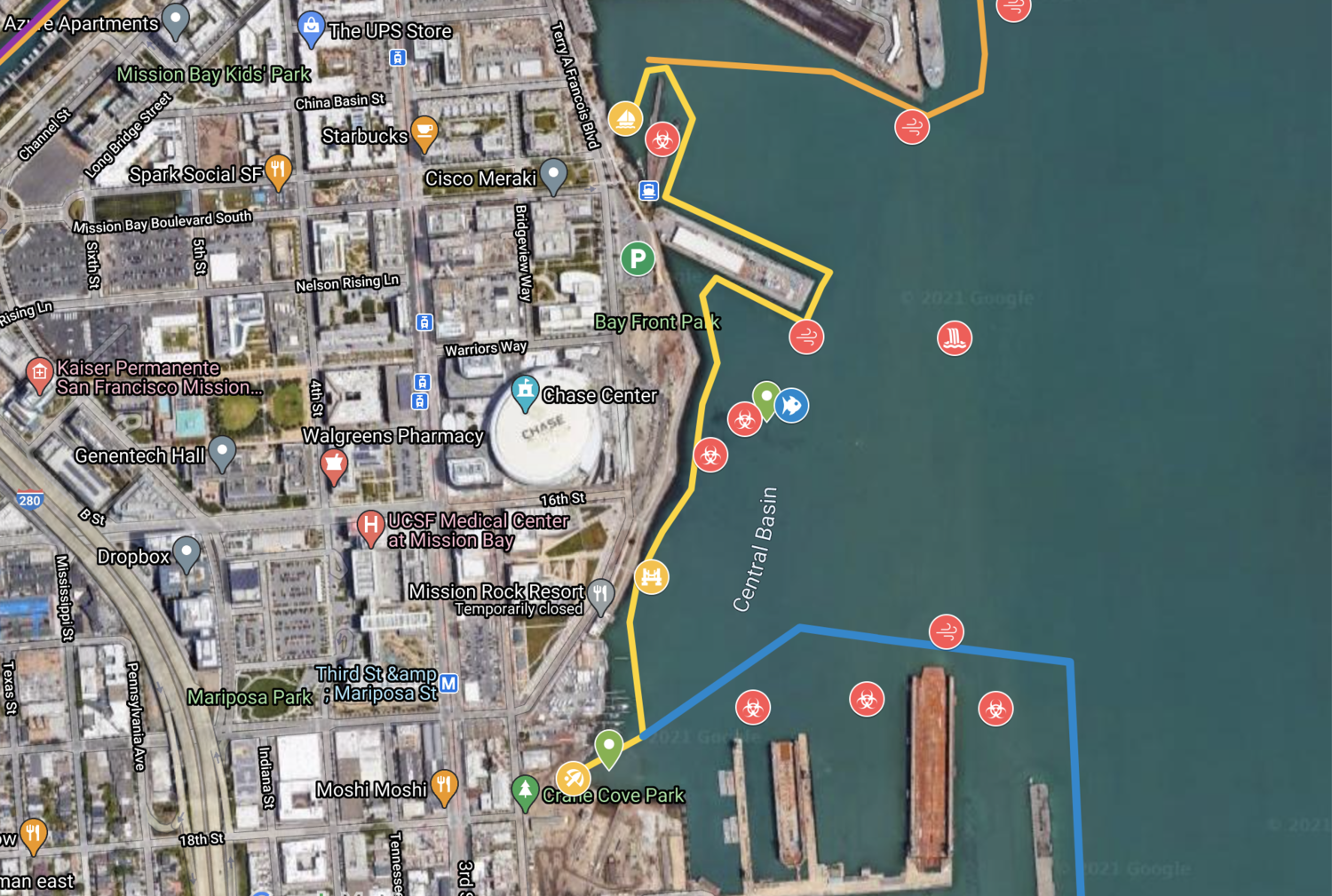Paddle Routes From Crane Cove
With so many people paddling out of Crane Cove, I want to make certain we're sharing as much information as possible to maximize your experience. I've attached the paddle map that I strongly encourage everyone to use before heading out. On the map, we provide detailed descriptions of the routes accessible from Crane Cove Park. Click on any route or icon to see more details.
CRANE COVE PADDLE MAP
First, Crane Cove and the space between the Dry Dock to the south and Pier 50 to the North generally experience different conditions than the greater Bay. Because the area is somewhat protected, you'll see gentler conditions under many circumstances. That said, never underestimate the power of the Bay and heed caution when launching.
LEVEL 1 - PADDLING IN THE COVE
The Cove itself is almost always safe for beginners. Staying west of the buoys and not leaving north past the San Francisco Boatworks dock, you can practice your balance, do loops and laps and remain protected from currents. This is what we've come to call "Lake Dogpatch".
LEVEL 2 - PADDLING TO PIER 54
Once you are confident in your basic skills, the next level up would be heading North past the Boatworks toward Mission Rock Resort. The key for novices is to stick close to the docks / shore, all the way until you reach Pier 54. You can paddle underneath the fishing pier and hug the rocks past the abandoned dock / pilings we've nicknamed "The Roman Forum" (these are ruins in front of our modern-day colosseum). There are significant underwater obstacles in and around the ruins, but there's a solid channel on the shore side, and it opens up on the Eastern side.
LEVEL 3 - PADDLING TO PIER 52/50
Usually it's pretty safe to follow Pier 54 out to it's end and go around it into the cove at Pier 52. Typically we'll stick close to the north side of Pier 54 for the flattest water and to offer shadows from winds and current. Once you get inland, you can go around the wreckage of the Pier 52 rail tracks to the public dock at Pier 52. This is a good rest spot and an opportunity to pull-out if you are experiencing any challenges.
The last stage of this introductory paddle is to follow Pier 50 closely and get your a-ha moment at the end where the Cape Horn and Cape Husdon military ships are docked (at various times there are one, both or none at the end of Pier 50). You will instantly see how the Bay becomes more turbulent This is where the legendary currents can get real. To head back, simply retrace your steps until it's calm enough to point yourself toward the edge of Pier 54 and head back to Crane Cove park up against the shore line, the same way you came.
The above loop is by far the safest appx 2 mile route from Crane Cove Park. At any point you should be close to an exit strategy without struggling in open water. Literally, there isn’t a section of this paddle that is beyond 50 feet of the shore or a pier. If you find yourself in any open water, paddle back to the shadow of a pier or close to the shoreline.
LEVEL 4 - PADDLING TO MCCOVEY COVE
Only those with solid skills, experience, and understanding of currents, winds, tides should ever consider going past Pier 50. It's a great time on a flat day to head over to McCovey Cove and up Mission Creek. Just make sure you're within your depth. The key is to know that you will have the current at your back on your RETURN. The last thing you want to do is fight the currents out past Piers 48/50, especially if there is wind. Some days this is a cake-walk and the water is flat, calm, and easy. But this can turn on a dime and the wind kicks up, tide shifts, and you’re fighting a monster. Know before you go. And if you don’t know - ASK.
LEVEL 4 - PADDLING TO WARM WATER COVE
Lastly, paddling over to Pier 70, warm water cove and Islais Creek can also be an amazing time. Just remember the same goes for passing beyond the Dry Dock as Pier 50. Only do it if you have experience and are confident you know you're ok with the conditions (current, wind, tides) - and always plan for your return. Also, never ever ever paddle within the Dry Dock itself. It's tempting to ignore the warning signs, but its forbidden and dangerous.
Enjoy yourselves out there. Ask questions here. Get your practice paddles in and then join us on the water for the more advanced stuff! And don't forget to check the map and webcam.


